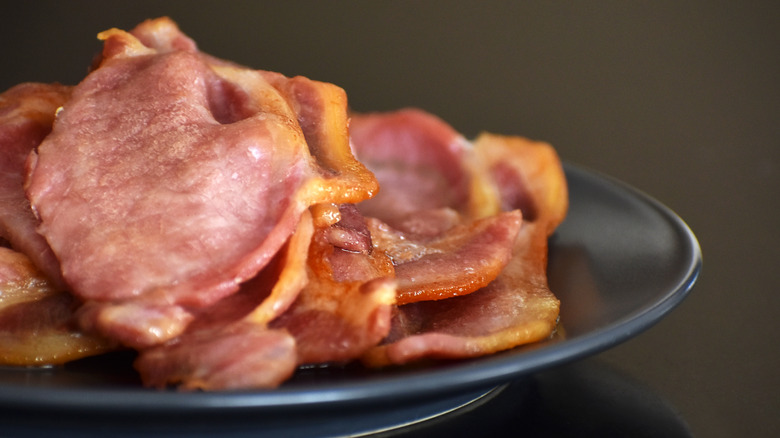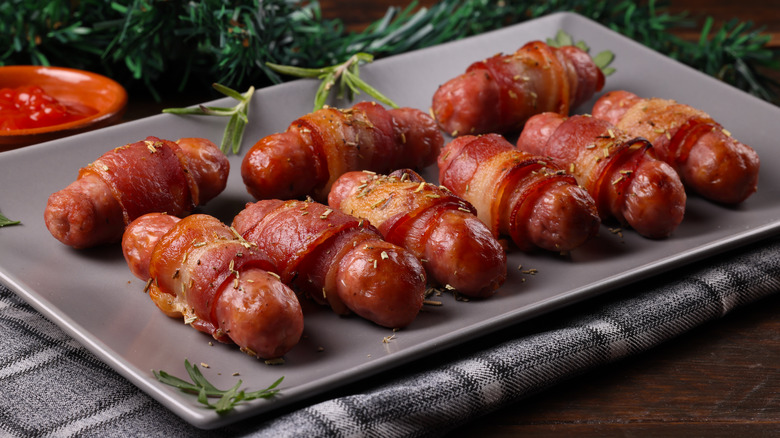Here's What You Need To Know About Streaky Bacon
Iconic British streaky bacon can be tough to track down in the U.S. – maybe because the USDA only recognizes the traditional American iteration in its technical "bacon" definition: "The cured belly of a swine." Any other cut of meat, like streaky bacon, must be explicitly labeled as "pork loin bacon" or a similar descriptive title referring to where on the pig the cut of meat comes from. Indeed, the difference between the types has less to do with preparation than with the actual cut of meat itself.
Streaky bacon could be described as the midpoint between American and Canadian bacon. American bacon is cut from the pork belly, and Canadian bacon is cut from the pork loin. Traditional British bacon is cut from the back with part of the belly attached and combines both the crave-able leanness and fattiness into one cut. This best-of-both-worlds composition is the result of a highly specialized cut, encompassing both loin and belly.
The "streaky" part of the name comes from the long, layered ripples of fat that run parallel to the rind. This high-fat content makes streaky bacon crispy when fried. It's cut into round slices (aka rasher), which are thicker and chewier than American bacon strips. Some U.K. foodies use the terms "streaky bacon" and "back bacon" interchangeably to refer to the same cut of meat. To others, these are two different things, with back bacon being slightly leaner and streaky bacon being slightly fattier.
Big flavor and long tradition
In the U.K., farmers have bred generations of pigs specifically for producing top-tier cuts of streaky bacon. The genetic lineage of the Yorkshire and Tamworth pig breeds are revered as especially good for streaky bacon, which is subjected to varying regional methods of curing and smoking. In general, a dry-cure is considered preferable to a wet-cure.
Streaky bacon is sold by individual rashers or larger cuts, either smoked or unsmoked (aka "green"). Much like American bacon, it can be baked in the oven or pan-fried on the stove. For traditional cooking, fry rashers for 2-3 minutes on each side. Larger cuts of back bacon should be boiled or roasted for approximately 20-30 minutes.
Streaky bacon (aka side bacon) is a crucial part of a classic full English breakfast, but that's far from this savory food's only use. It can be made into a delicious BLT or bacon Reuben sandwich. Around the holiday season, many British foodies wrap rashers of streaky bacon around sausages as a festive treat, pigs in a blanket style. Additionally, you could try wrapping streaky bacon around roasted monkfish for an elevated hors d'oeuvre or crumble it into pasta carbonara or thick, comforting split pea soup.
When thinking ahead about how and when to utilize your steaky bacon, it's important to note that unsmoked streaky bacon will keep in the fridge for seven days, and smoked will keep for 10. For maximum longevity, the meat should be wrapped in greaseproof deli paper. Now that you know all about this British delicacy, it's time to go experiment!

